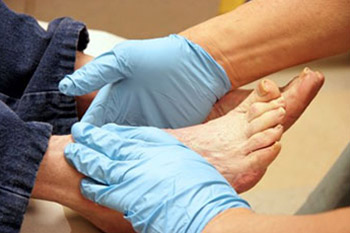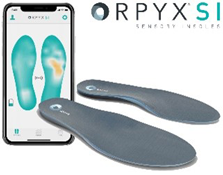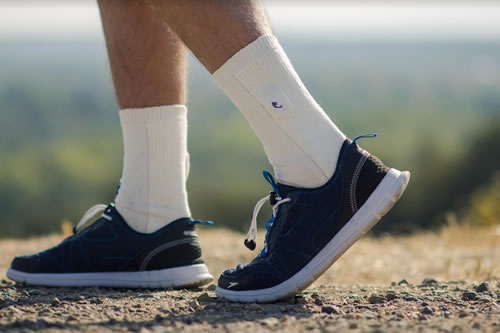Diabetes Foot Management Program

Complications from Diabetes
Diabetes is one of the most prevalent chronic diseases in the United States and worldwide. It is estimated that over 16 million Americans have diabetes, which represents about 5.9% of our population and that each year about 800,000 people are diagnosed with diabetes, which translates into 90 people per hour.
Further, it is estimated that as many as one-third of all individuals who meet the diagnostic criteria for diabetes remain undiagnosed and thus untreated. The prevalence of this disease among Mexican Americans, Native Americans, and African Americans is even higher.
The social and economic toll of diabetes is enormous. It has been estimated that about 17% of all deaths in the United States are related to this disease and the age-adjusted mortality among those individuals with type 2 diabetes is twice that of individuals who do not have diabetes.
Diabetes is the leading cause of new cases of blindness in adults. Each year approximately 12,000 to 24,000 individuals lose their sight to diabetes. Diabetes is also the leading cause of end-stage renal disease, where it accounts for 50% of new cases. Diabetes is also an important risk factor for atherosclerotic vascular disease. Individuals with diabetes are 2 to 4 times more likely to die of a myocardial infarction and/or suffer a stroke. In addition, diabetes is the most frequent cause of nontraumatic lower limb amputations. The risk of a foot or leg amputation is between 15 to 40 times greater for an individual with diabetes, with each year more than 56,000 amputations being performed.
New technologies to prevent foot complications
Orpyx
Orpyx SI insole that fits into your diabetic shoes and allows me to remotely monitor what is happening with your feet. They are called Orpyx® SI Sensory Insoles.

- These insoles will allow me to keep track of the health of your feet in between your appointments at my office.
- The insoles will keep us both informed when potential issues arise to minimize risk.
- These are covered by many insurance companies including Medicare, so the cost is typically in-line with your normal co-insurance amounts.
I’ve attached a brochure with information for you to review, and please go to the company’s website to learn more: Here!

Diabetes: Signs of the Presence
There are usually frequent signs of the presence of diabetes and they are as follows: increased thirst, frequent urination, chronic fatigue, a rapid and unexplained loss of weight, blurred vision, wounds that are slow to heal and frequent infections. As well there can be sweating from the waist up with dry skin from the waist down and tingling and numbness in the hands and feet.
If there is the presence of elevated blood sugar levels over a long period of time commonly the results are damage to the kidneys, heart, eyes, and feet. This is due to damage to small blood vessels. It can and may impair kidney function. Vascular disease increases the potential for heart disease and stroke. Cataract formation can and may occur with a loss of vision. With the feet, it may result in diminished circulation and damaged nerves (known as neuropathy) which results in a lack of sensation (feeling) coupled with a reduced ability to fight off infection and heal wounds.
Complex Foot Problems
Early recognition and continued management of risk factors for ulcers and amputations can prevent or delay the onset of these adverse outcomes. That is why the Southern Arizona Diabetic Foot & Lower Extremity Care Clinic provides a multidisciplinary team approach to managing the complex and chronic elements of the diabetic foot.
Under the direction of Barbara J. Aung, DPM, board certified diabetic wound prevention and care specialist, our experienced team of medical professionals have designed an atmosphere to optimize state-of-the-art medical care coupled with communication and coordination of treatment protocols to promote the most thorough, accurate and expeditous medical care of disorders involving the diabetic foot.
OBJECTIVES OF THE TREATMENT PLAN INCLUDE:
- Risk identification
- Treatment of existing wounds
- Prevent and/or eliminate infection
- Prevent ulcer/wound occurrence
- Monitor & maintain good glucose control
- Correct altered biomechanics
- Screen & manage for evidence of increased pressure
- Screen & manage limited joint mobility and/or bony deformity
- Screen & manage severe nail pathology
- Screen & manage peripheral vascular disease
- Optimize nutritional status
- Patient & family diabetic education
Our team consisting of a podiatric physician, a primary care physician specializing in the management of diabetes, a nurse certified in diabetes education, a vascular surgeon, a dietician/nutritionist, a physical therapist, and a certified pedorthist coupled with other medical practitioners actively participate in the team approach to care.
The successful outcomes we have been able to achieve are the result of an overall control of each component of this disease. By accomplishing this we are able to assist in “Keeping Your Feet Healthy for the Journeys... Yet to be Made.”
Healthy Feet Tips for People with Diabetes
You are at risk for foot ulcers and amputation if you have:
- Loss of feeling in your feet
- Pain in your legs while walking
- Changes in the shape of your feet
- Previous foot ulcers
To prevent foot ulcers, individuals with diabetes who have any one of these risk factors must be committed to actively exam and protect their feet on a daily basis.
There is a lot you can do to prevent serious problems with your feet. Here’s how by following your foot care plan.
Check your feet every day, look for sores, cuts, bruises, and injury.
Wash your feet every day. Always dry your feet with a soft towel after bathing or showering.
Keep the skin soft and smooth. If your feet are dry or cracked, use the moisturizing cream recommended by your foot care specialist, doctor, or nurse.
Smooth corns and calluses gently. Do not cut corns & calluses. Do not use razor blades, corn plasters, or liquid corn & callus removers–they can damage your skin.
If you have trouble with corns & calluses, check with your podiatric physician or doctor.
Trim your toenails each week or when needed. If you cannot see well, or if your toenails are thick or yellowed, have a podiatric physician (foot care doctor) trim them.
Protect your feet by wearing appropriate shoes. If you know, or have been told, that you have less feeling in your feet, always before you put on your shoes, check the inside for rough spots or loose objects which do not belong in your shoe.
Do not go barefoot, even inside your home. Wear shoes & socks at all times.
Protect your feet from hot and cold. Put sun screen on the top of your feet to prevent sunburn. Wear shoes on hot pavement. Do not put hot water bottles or heating pads on your feet. Wear socks at night if your feet get cold. Lined boots are good in winter to keep your feet warm.
Keep the blood flowing to your feet. Wiggle your toes for 5 minutes, 2 or 3 times a day. Move your ankles up and down and in and out to improve blood flow in your feet and legs. Do not cross your legs for long periods of time. Do not wear tight socks, elastic or rubber bands or garters around your legs.
Do not smoke! Smoking reduces blood flow to your feet. Ask your podiatric physician, doctor or nurse to help you stop smoking.
Be more active. Ask your doctor to help you plan an activity program that is right for you. Walking, dancing, swimming, and bicycling are good forms of exercise that are easy on the feet.
Make sure that your podiatric physician, doctor, or nurse examines your bare feet during each visit and checks the pulses (circulation) in your feet a least once a year or if you are at risk at each visit.
Work with your health care team to make a diabetes plan that fits your lifestyle. Keep your doctor’s appointments and have your feet, eyes and kidneys checked at least once a year.
Diabetic Symposium
Dr. Barbara Aung hosts a diabetic symposium each year in the spring and fall. Watch this area for more details of the upcoming November meeting.
Coronary Risk Assessment Form
Download and Print the Coronary Risk Assessment Form to determine your risk factor.
Check Out Your Pain
If pain is interfering with your life, you may want to speak to your doctor. Download and Print the Pain Assessment Form and share the results with your doctor.





